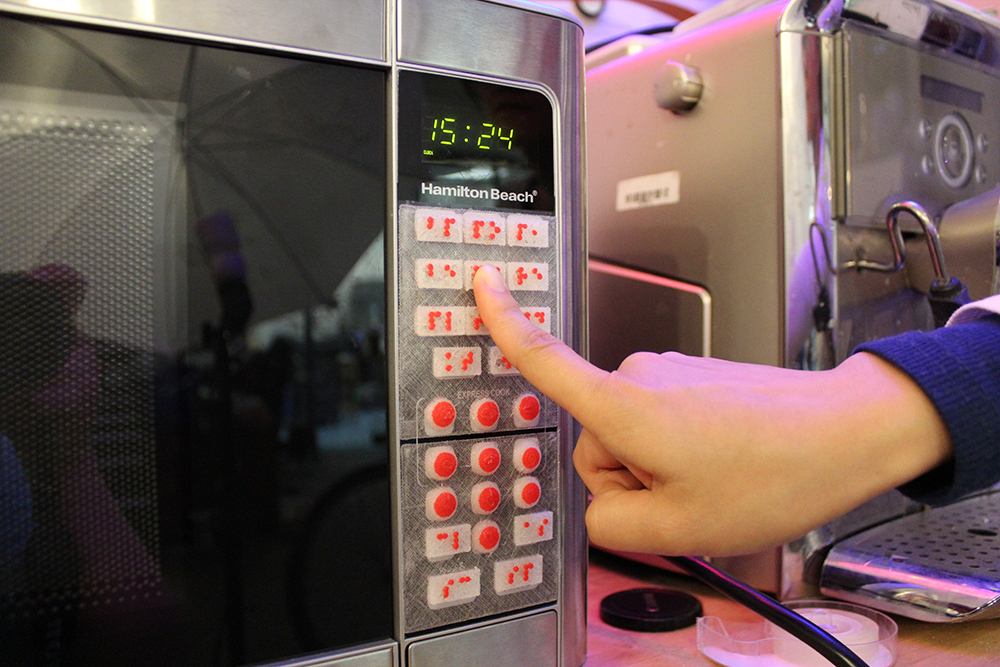Abstract
Common appliances have shifted toward flat interface panels, making them inaccessible to blind people. Although blind people can label appliances with Braille stickers, doing so generally requires sighted assistance to identify the original functions and apply the labels. We introduce Facade - a crowdsourced fabrication pipeline to help blind people independently make physical interfaces accessible by adding a 3D printed augmentation of tactile buttons overlaying the original panel.
Facade users capture a photo of the appliance with a readily available fiducial marker (a dollar bill) for recovering size information. This image is sent to multiple crowd workers, who work in parallel to quickly label and describe elements of the interface. Facade then generates a 3D model for a layer of tactile and press-able buttons that fits over the original controls. Finally, a home 3D printer or commercial service fabricates the layer, which is then aligned and attached to the interface by the blind person. We demonstrate the viability of Facade in a study with 11 blind participants.
Full Citation
Anhong Guo, Jeeeun Kim, Xiang 'Anthony' Chen, Tom Yeh, Scott E. Hudson, Jennifer Mankoff, and Jeffrey P. Bigham. 2017. Facade: Auto-generating Tactile Interfaces to Appliances. In Proceedings of the 2017 CHI Conference on Human Factors in Computing Systems (CHI '17). ACM, New York, NY, USA, 5826-5838. DOI: https://doi.org/10.1145/3025453.3025845
Other Media

